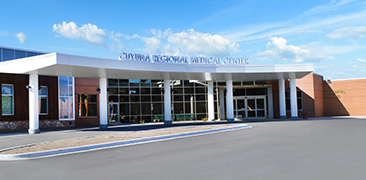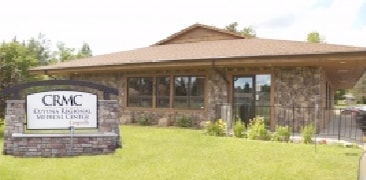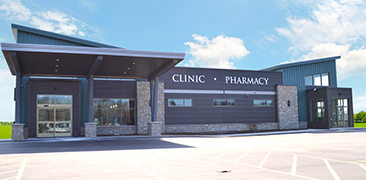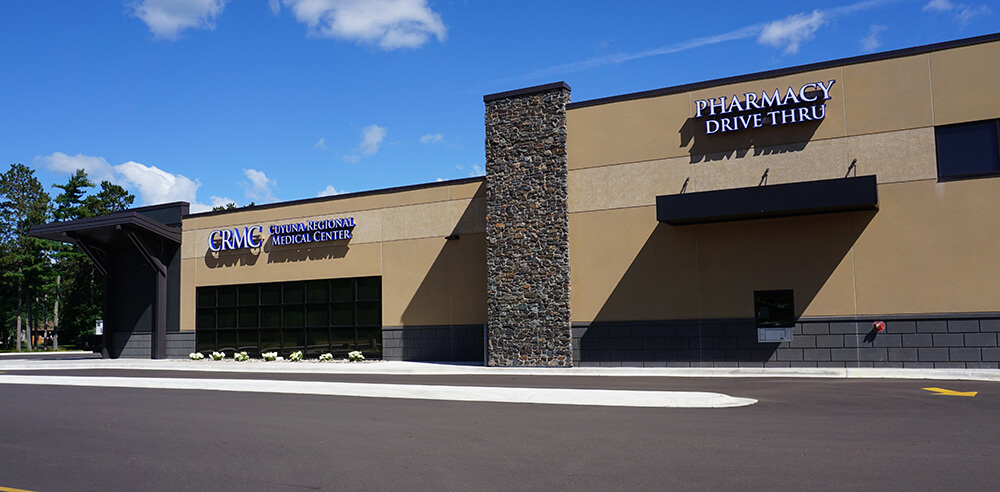The ovaries are two small organs, one on each side of a woman’s uterus. It is normal for a small cyst (a fluid-filled sac or pouch) to develop on the ovaries. These cysts are harmless and in most cases, go away on their own. Others may cause problems and need treatment.
Your Monthly Cycle
One of the two ovaries—each about the size of a walnut—produces an egg every month during your menstrual cycle. An egg, encased in a sac called a follicle, grows inside the ovary. On about day five of your menstrual cycle, the hormone estrogen signals the endometrium (the lining of the uterus) to grow and thicken to prepare for a possible pregnancy. About day 14, the egg is released from the ovary. This is called ovulation.
Around the time of ovulation, a woman can get pregnant. The egg moves into one of the two fallopian tubes connected to the uterus where it can be fertilized by a man’s sperm. After ovulation, the empty follicle becomes the corpus luteum which remains until the next period. The corpus luteum makes hormones that cause the endometrium to grow.
Types of Ovarian Cysts
Ovarian cysts are quite common in women during their child bearing years. Most cysts result from the changes in hormone levels that occur during the menstrual cycle and the production and release of eggs from the ovaries. A woman can develop one cyst or many cysts. Ovarian cysts can vary in size—from as small as a pea to as big as a grapefruit.
There are different types of ovarian cysts and each type causes a variety of symptoms. All cysts can bleed, rupture and twist which can cause pain. Most cysts are benign—not cancerous. A few cysts may turn out to be malignant (cancerous). For this reason, all cysts should be checked by your doctor.
Functional Cysts
The most common type of an ovarian cyst is called a functional cyst. It develops from tissue that changes in the normal process of ovulation. There are two types of functional cysts—follicle and corpus luteum. Both cysts usually have no symptoms or minor ones when they occur. They disappear within a few months.
Dermoid Cysts
Dermoid cysts are made up of different kinds of tissue such as skin, hair, fat and teeth. They may be found on both ovaries. Dermoid cysts are often small and may not cause symptoms. They can, however, become large and cause symptoms.
Cystadenomas
Cystadenomas are cysts that develop from cells on the outer surface of the ovary. They are usually benign, but they can create problems. Cystadenomas can grow very large and interfere with abdominal organs and cause pain.
Endometriomas
Endometriomas are cysts that form when endometrial tissue grows in the ovaries. This tissue then responds to monthly changes in hormones. The tissue bleeds monthly, which may cause it to form a gradually growing cyst on the ovary. An endometrioma is also known as a chocolate cyst because it is filled with dark, reddish-brown blood.
An endometrioma is often linked to a condition known as endometriosis. It can be painful, especially during the menstrual period or during sexual intercourse.
Multiple Cysts
Women who do not ovulate regularly can develop multiple cysts. This is a disorder in which the ovaries are enlarged and contain many small cysts. It can be linked to a condition called polycystic ovary syndrome (PCOS). This condition causes irregular menstrual periods, infertility and increased body hair.
Symptoms
Most ovarian cysts are small and do not cause symptoms. Some go away on their own. Some may cause symptoms because of twisting, bleeding and rupture. They may cause a dull ache in the abdomen and pain during sexual intercourse.
Some cysts may be cancer. The risk of ovarian cancer increases as you get older. Although ovarian cancer often has no symptoms in its early stages, you should be aware of its warning signs.
If you have any symptoms, see your doctor. If ovarian cysts are found early, many of the problems caused by them can be treated.
Diagnosis
An ovarian cyst is often found during a routine pelvic exam. When your doctor detects an enlarged ovary he or she may do other tests to confirm the diagnosis:
Ultrasound: A procedure that uses sound waves to create pictures of the internal organs that can be viewed on a screen.
Laparoscopy: A surgical procedure that allows a doctor to look directly inside the body. The laparoscope—a thin lighted telescope—is inserted into the abdomen to view the pelvic organs. Laparoscopy can also be used to treat your cyst.
Blood tests: Tests to measure substances in the blood and help confirm the diagnosis. One such test, CA 125, may be used to detect a risk for ovarian cancer.
Some of these tests provide further information about the cyst that is helpful in planning treatment. Some may be used only if there is a high risk of problems.
Treatment
If your cyst is not causing any symptoms, your doctor may simply monitor it for one to two months. Most functional cysts go away on their own over one or two menstrual cycles.
If your cyst is large or causing symptoms, your doctor may suggest treatment with hormones or surgery. The type of treatment depends on several factors:
- Size and type of cyst
- Your age
- Your symptoms
- Your desire to have children
Hormonal Therapy
Your doctor may prescribe oral contraceptives (birth control pills) to treat functional ovarian cysts. The hormones in birth control pills stop ovulation. This prevents follicles from developing and stops new cysts from forming. Birth control pills may not be right for every woman, especially if you smoke cigarettes and are over age 35. Your doctor will help you decide if hormonal therapy is right for you.
Surgery
Your doctor may suggest surgery to remove the cyst. He or she will decide which type of treatment is best for you. The extent and type of surgery that is needed will depend on several factors. Sometimes a cyst can be removed while leaving the ovary—called cystectomy. In other cases, one or both ovaries may have to be removed. Your doctor may not know which procedure is needed until the surgery begins.
Finally . . .
Ovarian cysts are common in women during their childbearing years. Although most cysts are harmless and go away on their own, your doctor will want to keep track of any cyst to be sure that if does not grow and cause problems.
If you have ovarian cysts, you probably have some concerns. Share your concerns with your doctor. You can work together to reduce your risk of further problems and to help you stay healthy.











